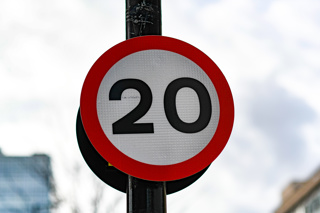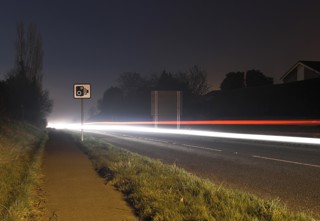Seven-in-10 drivers would like lower motorway speed limits in wet weather, according to new research from the RAC.
Road accident statistics from the Department for Transport (DfT) show that 246 people were killed or seriously injured on UK motorways in 2019 when the road surface was damp, wet or flooded
An RAC survey of more than 2,000 drivers suggest that 72% would like to see the standard 70mph speed limit on motorways reduced in wet weather to improve road safety and encourage better driving habits.
A third (33%) said the limit should be reduced to 60mph in the wet, less than one in 10 (7%) think it should be cut to 65mph, while almost one in six (17%) said they would like an even lower limit of 55mph or even 50mph. One in seven (14%) would like to see the limit cut but were not sure by how much.
France cuts its speed limits during inclement weather, with the 130km/h (80mph) limit reduced to 110km/h (68mph – a reduction of around 12mph).
Rod Dennis, from the RAC, said: “Statistically, the UK has some of the safest motorways in Europe but it’s also the case that there hasn’t been a reduction in casualties of all severities on these roads since 2012, so perhaps there’s an argument for looking at different measures to help bring the number of casualties down.
“Overall, our research suggests drivers are broadly supportive of lower motorway speed limits in wet conditions, as is already the case across the Channel in France. And, while most drivers already adjust their speed when the weather turns unpleasant, figures show that ‘driving too fast for the conditions’ and ‘slippery roads’ are still among the top 10 reasons for motorway collisions and contribute to significant numbers of serious injuries and even deaths every year.”
Of the reasons given by drivers who advocate lower motorway speed limits in the wet, 78% said they felt lower limits would encourage some drivers to slow down, while 72% believed it might save lives, so is worth trying.
Two-thirds (65%) said slower speeds might improve visibility with less spray from moving vehicles, and half (53%) felt it would reduce overall vehicle speeds, even if some people ignored the lower limit.
Among the fifth of drivers (21%) who are against the idea of a lower motorway speed limit in bad weather, a majority said it was because most drivers already adjust their speed to the conditions (54%), or because there would be difficulty in defining when the new limit should apply (60%).
Four in 10 (42%) said many drivers choose to ignore existing speed limits anyway and a similar proportion (41%) thought drivers wouldn’t obey a lower motorway limit.
When asked whether a lower speed limit in the wet should be posted on stretches of motorway that already feature variable speed limit signage, including smart motorways, 73% of drivers were in favour, with 15% against the idea and 11% unsure.
“The overall success of any scheme would of course depend on sufficient numbers of motorists reducing their speed, but even just a proportion reducing their speed in the wet would be likely to improve the safety of the UK’s motorways,” continued Dennis.
“There would also be a number of practical hurdles to be overcome such as deciding what that lower limit would be, updating the Highway Code and fitting roadside signage to inform drivers of the new limits.
“Finally, it’s worth remembering that an increasing number of stretches of motorway no longer have permanent 70mph limits, as all smart motorways feature speed limits which are automatically adjusted to ease congestion based on traffic flow.
“With digital signs now so commonplace, arguably the means exist to conduct a trial to see whether there are safety benefits of setting different speed limits in inclement weather.”
Highway Code Rule 227 states that stopping distances in wet weather are at least double those required for stopping on dry roads.






















Login to comment
Comments
No comments have been made yet.